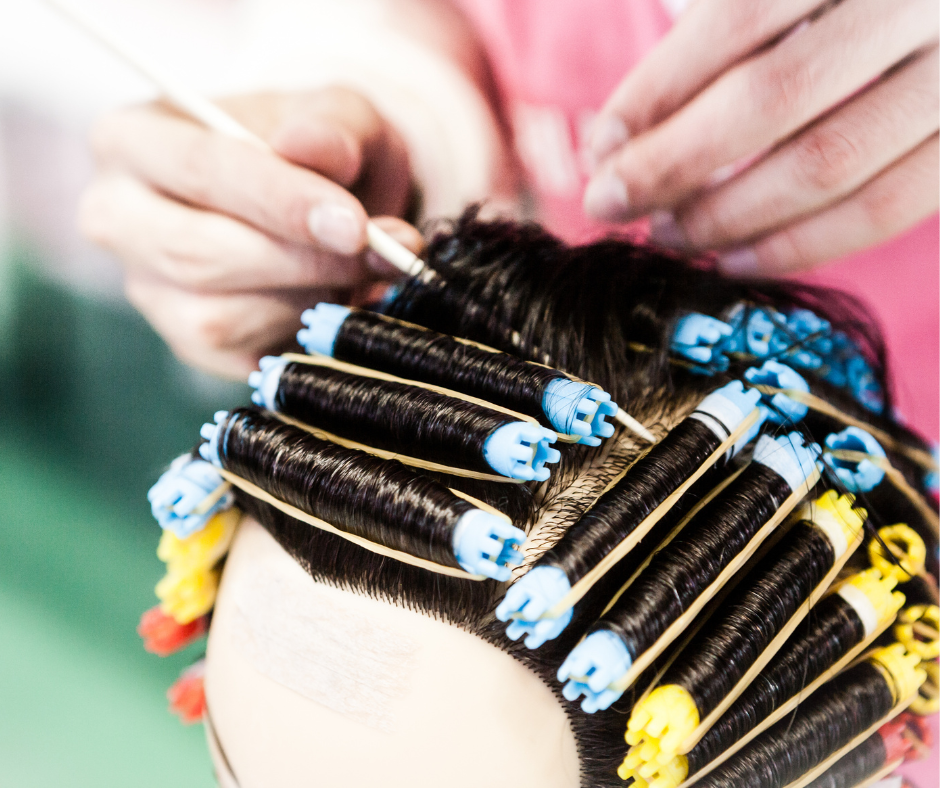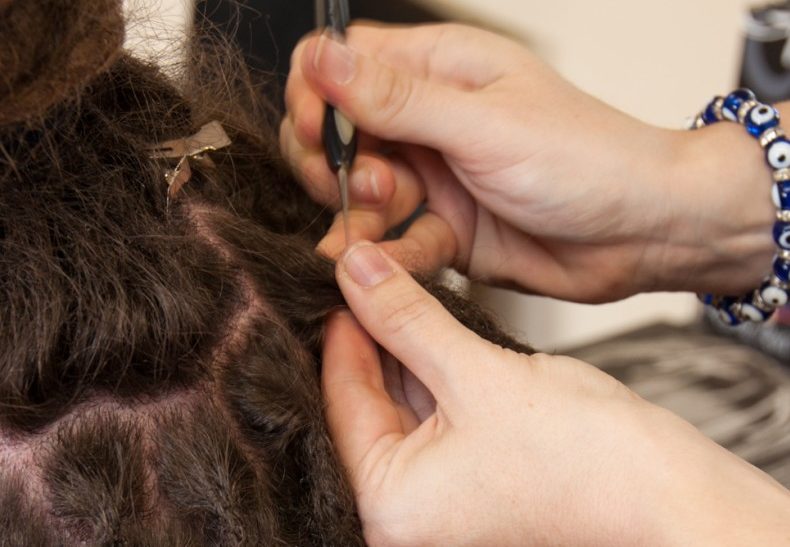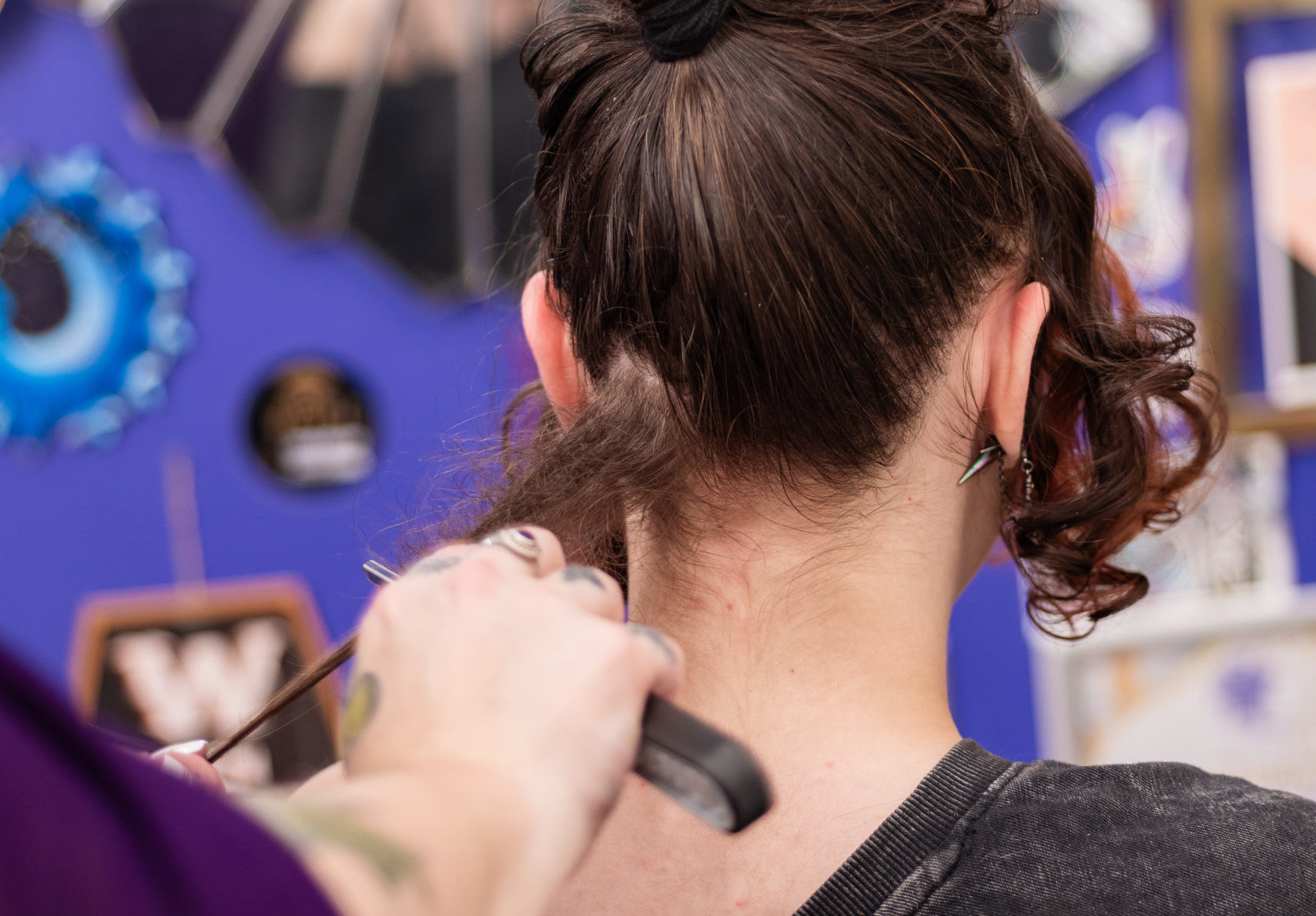We do not generally recommend backcombing. Many people use this technique as it is the easiest, most easily learned technique. However, we feel other methods (Rip & Twist) are much better. Backcombing involves the use of a dread comb, as mentioned earlier, to arrange the hair perpendicularly along a central strand of hair (see diagram at left). However, because of this arrangement, over time (like everything else on our planet) it is affected by gravity and the ‘knots’ can, and often do, begin to migrate downwards. This leads to loose, undreaded hair in the middle of a dreadlock or the entire unraveling of a dreadlock altogether. The use of rubber bands can help prevent total unraveling, but not the development






